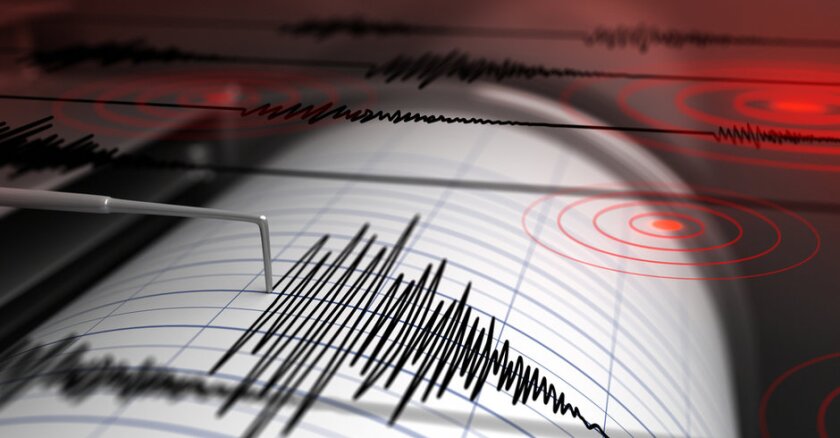Around the Bay Area, the 5.1 magnitude earthquake lit up mobile phones equipped with apps plugged into ShakeAlert, the U.S. Geological Survey’s fledgling earthquake early warning system, putting it to the test regionally for the second time in as many months.
“I was a bit confused then realized it was an alert system,” Blanco wrote in a Twitter reply to the USGS seeking feedback on the system on social media. Adamec told the USGS it was “wild how it could be so fast!”
The ShakeAlert system is finally a reality for over 50 million West Coast residents after more than a decade in development. With more than 903 buried sensors in California that can mobilize cellphone users who are at risk, it’s more than 80% complete. It is planned to have 1,115 sensors and quicker transmission time.
USGS seismologist Annemarie Baltay said in a statement Tuesday that the earthquake struck at 11:42 a.m. with an epicenter 12 miles east of San Jose and at a depth of just over 4 miles, within the Calaveras fault zone where the magnitude 6.2 Morgan Hill earthquake struck in 1984.
Baltay saidTuesday’s quake was widely felt with over 18,000 “Did you Feel It” reports submitted to the USGS as of 1 p.m. Tuesday, extending from Central California north to Sacramento and Sonoma County.
The USGS issued the initial ShakeAlert earthquake early warning system alert five seconds after the earthquake was detected, initially estimating a magnitude 4.8, Baltay said. That estimate grew, she said, as ShakeAlert power alerts were delivered to residents potentially providing seconds of warning, depending on their distance from the epicenter and how the alert was delivered.
The ShakeAlert system detects an earthquake’s initial waves of ground motion, which travel quickly and are weaker than the more damaging second set of waves. That triggers high-speed telemetry to send that ground motion information to processing centers in Seattle, Menlo Park and Pasadena. Within about five seconds, computer algorithms analyze the data to rapidly identify the epicenter and strength of the earthquake and publish a ShakeAlert message, which is picked up by government and private partners.
FEMA may issue a Wireless Emergency Alert, like an AMBER Alert. Two different apps — MyShake, developed by the UC Berkeley, and QuakeAlertUSA, by Early Warning Labs — also issue alerts to those who download the app.
Early Warning Labs said Tuesday it sent alerts to 928 users on Android and iOS devices via the QuakeAlertUSA app. Those users, the company said, were forecasted to experience shaking of a level 3 on the Modified Mercali Intensity scale, which measures an earthquake’s intensity.
Early Warning Labs said that under USGS rules, to receive an early warning, the earthquake must be over Magnitude 4.5 and the forecasted intensity over MMI 3.
“If the quake is smaller or your MMI is under 3 you might still feel light shaking but not be issued an alert,” the company said.
The ShakeAlert system got its last big trial Sept. 14 when a magnitude 4.4 earthquake struck 2.4 miles north of Santa Rosa. As with Tuesday’s earthquake, some people got alerts without much shaking, some got shaking before the alerts, and for others, the alert came just as the earthquake was being felt.
Eric Nau who lives in downtown San Francisco said he got the alert on his MyShake app one second before the shaking started, which he considered barely helpful.
“Based on USGS ShakeAlert data, I believe I should have gotten the alert about 10 seconds before,” Nau said. “So this was a disappointing result.”
Turin in Scotts Valley also felt the alert a minute late, and that “the message of drop!, cover!, hold on!, protect yourself! is meaningless and silly in context of a 5.1.”
“But I am not critical about that,” Turin added, “as they may improve it.”
Robert de Groot, the national coordinator of outreach and education for ShakeAlert at the USGS’ Pasadena Field Office, said the early warning system “performed as expected during this earthquake, similar to the Santa Rosa earthquake.”
“We learn something new from each earthquake,” de Groot said.
© 2022 MediaNews Group, Inc. Distributed by Tribune Content Agency, LLC.








